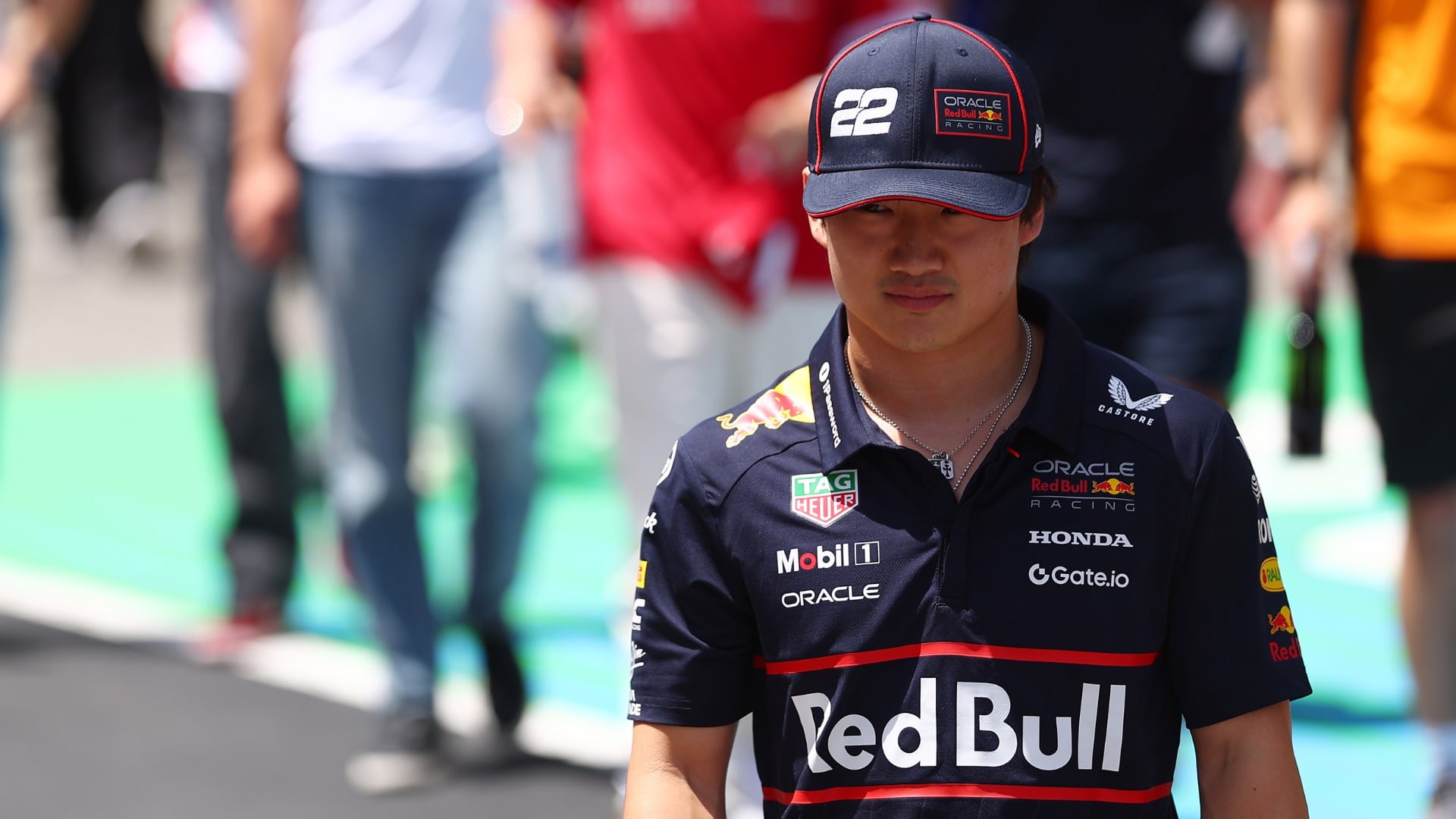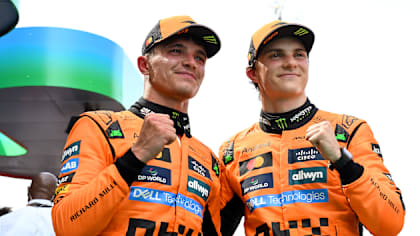
Technical
TECH TUESDAY: Which teams have found a solution to porpoising ahead of the Bahrain Grand Prix?

Share

Mark Hughes looks at the teams' continuing efforts to phase out porpoising during pre-season testing, and examines which teams have found the best solutions to the problem ahead of the Bahrain Grand Prix.
Even by the end of six days of pre-season running at Barcelona and Bahrain, the dominant theme among the teams testing their new cars is aerodynamic porpoising and how to control it.
Porpoising – the violent bouncing motion of the car on its suspension seen mainly on the straights – occurs when the airflow through the underbody venturi tunnels, which pulls the car to the ground, stalls.
Released of the downforce, the car rises on its suspension, un-stalling the airflow and allowing the tunnels to generate downforce once more, which pulls the car back down to the ground, thereby stalling the airflow once more etc. It can be a severe enough problem to create very real reliability concerns for the car, not to mention the physical battering it imposes on the driver, which may make a race distance unfeasible.
Onboard: Mercedes porpoising at pre-season testing
The venturi tunnels create downforce by inducing a lower air pressure in the underfloor than above, thereby sucking the car to the ground. The lower the tunnels get to the ground, the more powerful the effect is. The faster the car is going, the harder those tunnels suck and the closer to the ground they get… giving a cascading effect.
But if the ride height gets too low, the rear outer corners of the floor from which the tunnels are formed are not stiff enough to prevent those corners from physically touching the ground as the tunnels suck on the car and its sinks on its suspension. When this happens it creates such an effective seal that the tunnel is choked and stops working.
READ MORE: What to expect from Formula 1’s new race weekend format in 2022
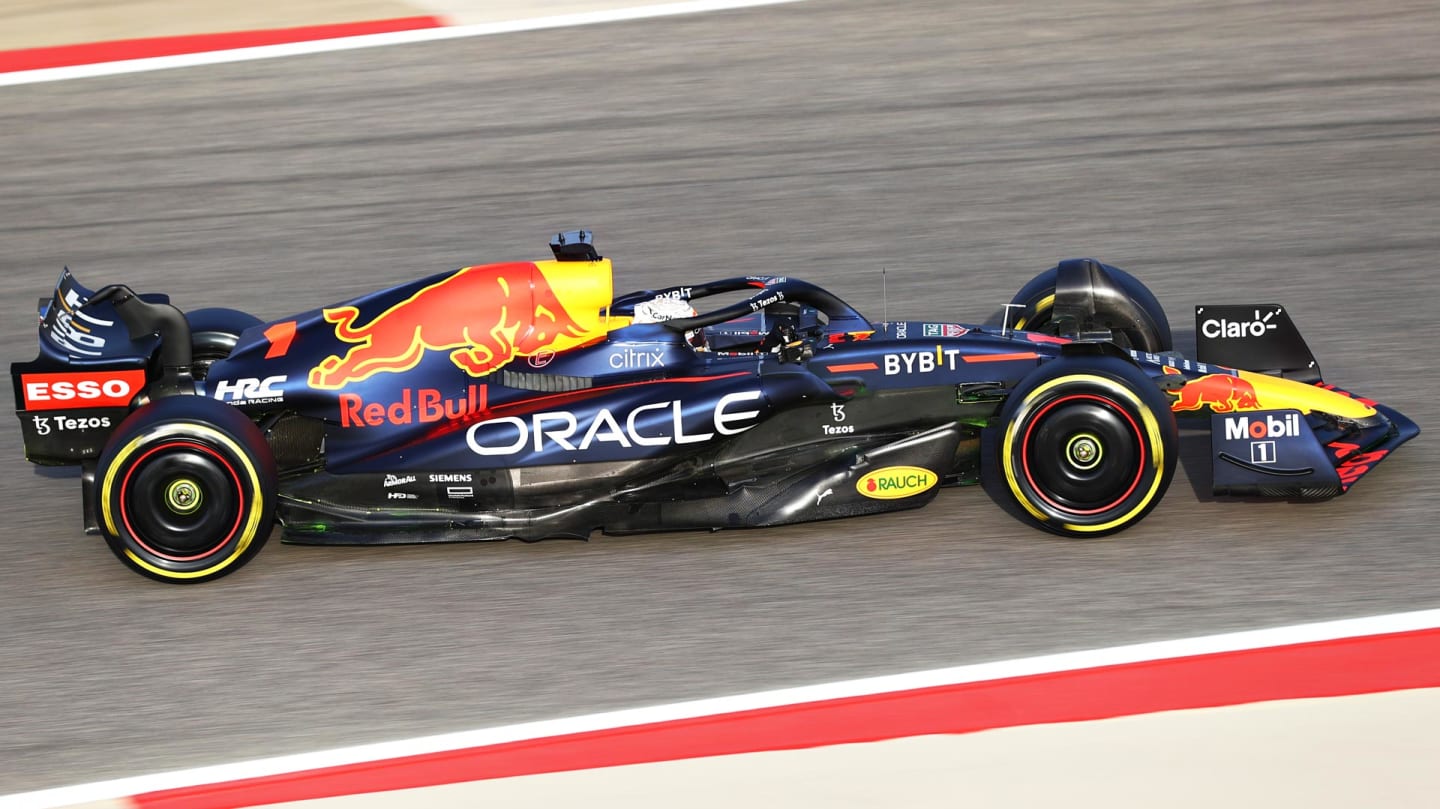
The significantly-updated RB18 emerged in Bahrain
The floor is effectively a big cantilever and it is thus extremely difficult to make the corners stiff enough not to be pulled to the ground at high speed.
It’s relatively easy to cure by increasing the rear ride height so that it never reaches the critical stall point even at high speed, but not without losing a lot of performance.
Yet, in Barcelona, McLaren showed that it was possible to retain competitive downforce without inducing much porpoising. In Bahrain, Red Bull seemed to have followed suit, as the modified RB18 seemed relatively immune to the phenomenon on the final day when they set the fastest times of the test.
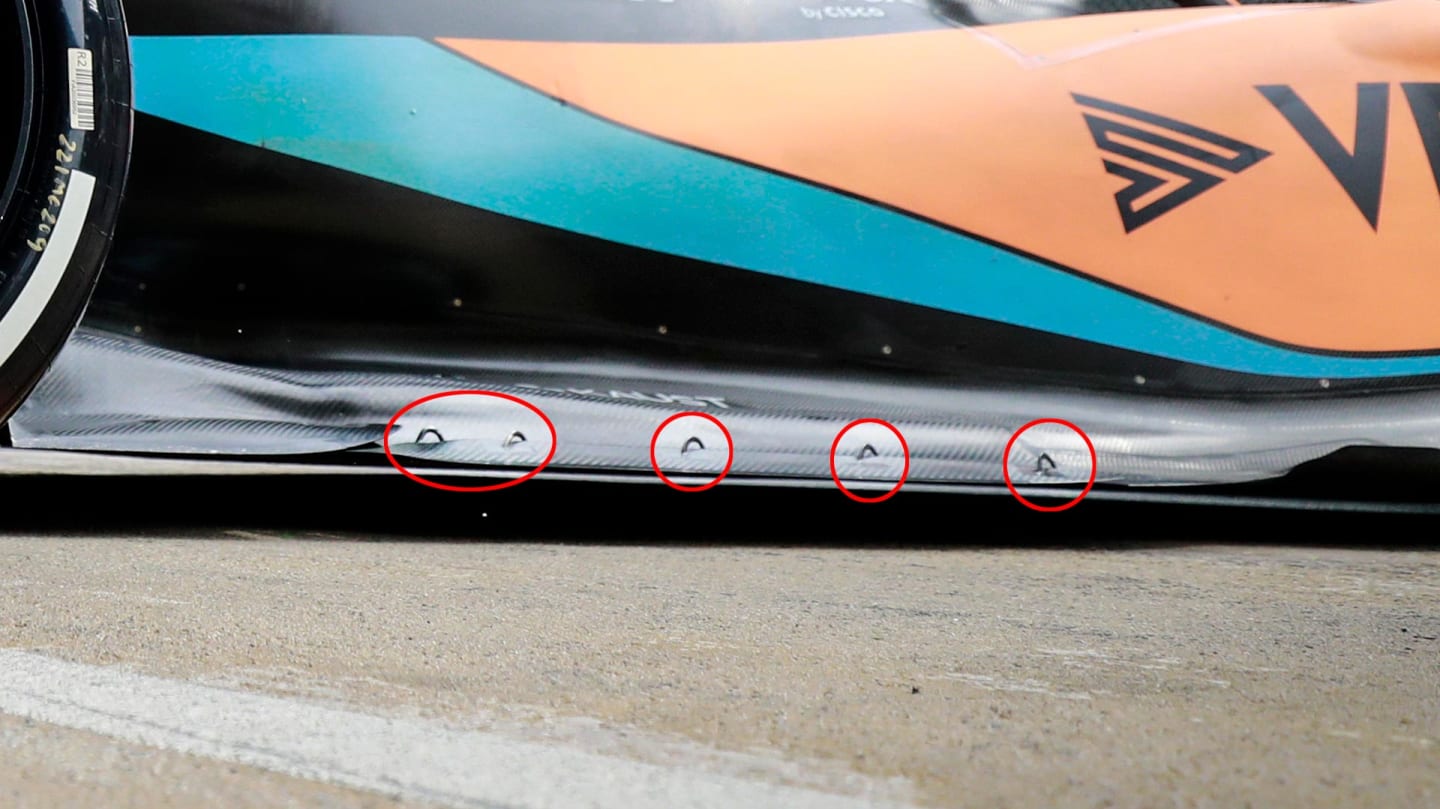
Circled above: the metal lateral slats on the outer edges of the front of the McLaren's floor, which are which are probably helping to trigger the big vortices that allows the McLaren to retain good downforce, even without running the floor so close to the ground that it porpoises
Mercedes meanwhile considered to struggle badly with the phenomenon, with Lewis Hamilton encapsulating the challenge when he said: “We’re just working through lots of different scenarios trying to figure out how to hold onto the downforce and not have it bouncing.”
Mercedes and Ferrari were among those using metal rods on the rear corner of the floor in an attempt at keeping it from bending down to stall point.
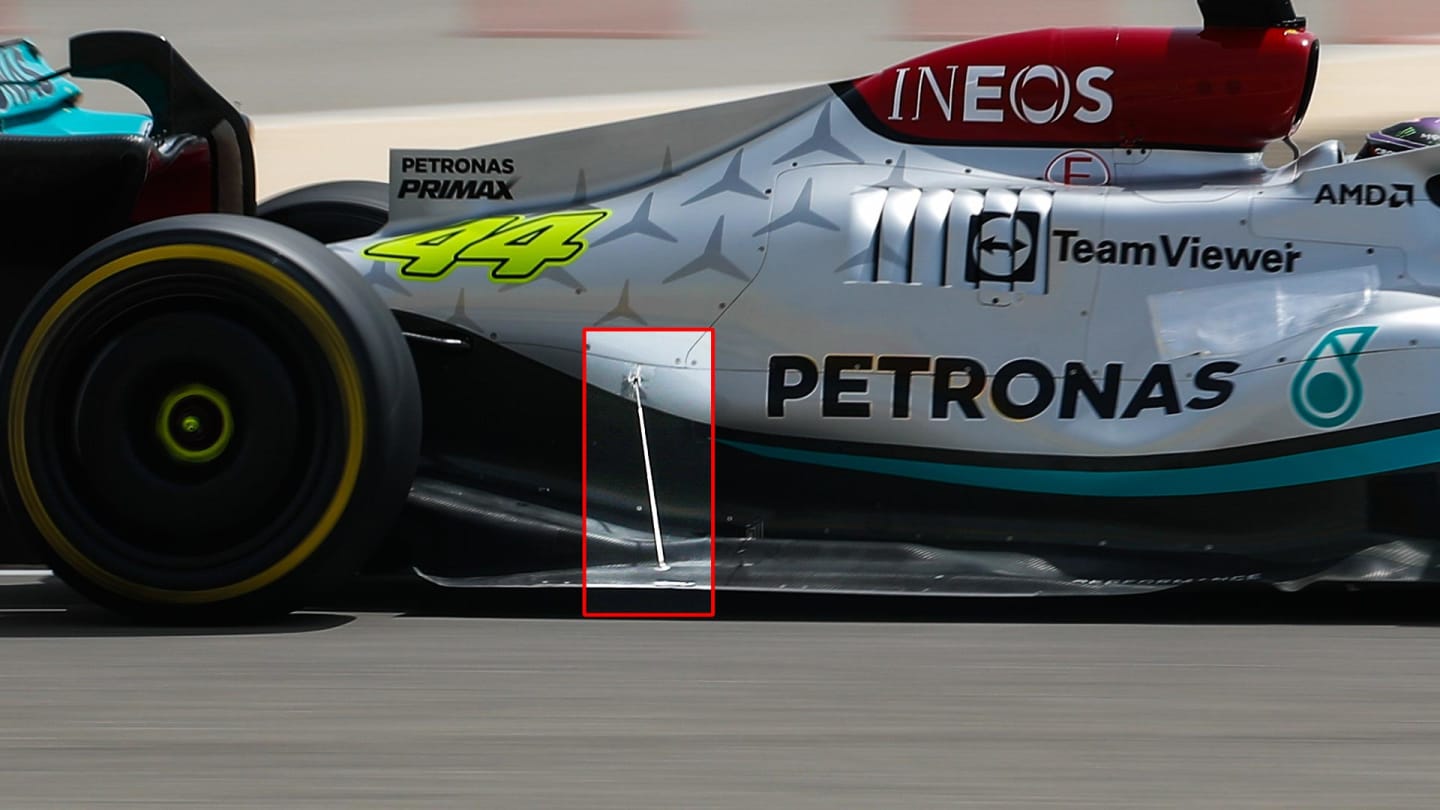
Mercedes (above) and Ferrari have tie rods on their floors to prevent them from bending and stalling
Right from the start, unlike most other cars, McLaren’s MCL36 wasn’t sealing its floor by running it almost on the ground. They have set its skid blocks at a height above the porpoising threshold.
In footage from Lando Norris’ cockpit from testing, the skid blocks’ light skittering over the Bahrain track surface at high speed could be heard quite distinctly, but there was virtually no porpoising.
The images from wet track running in Barcelona suggested the McLaren may be able to achieve good downforce despite its greater rear ride height, because it has more powerful vortices running down the sides – giving the floor a strong seal without having to have it so low that it makes contact with the track at high speed. That makes it apparently more stall-proof.
READ MORE: Norris says Official Pre-Season Test has been ‘less than ideal’ for McLaren

Wet running from Barcelona showed the powerful vortices coming off the MCL36
On the final day of Bahrain testing, Red Bull (its RB18 featuring modified sidepods with a bigger undercut at the front) appeared to be running their car with a small degree of rake.
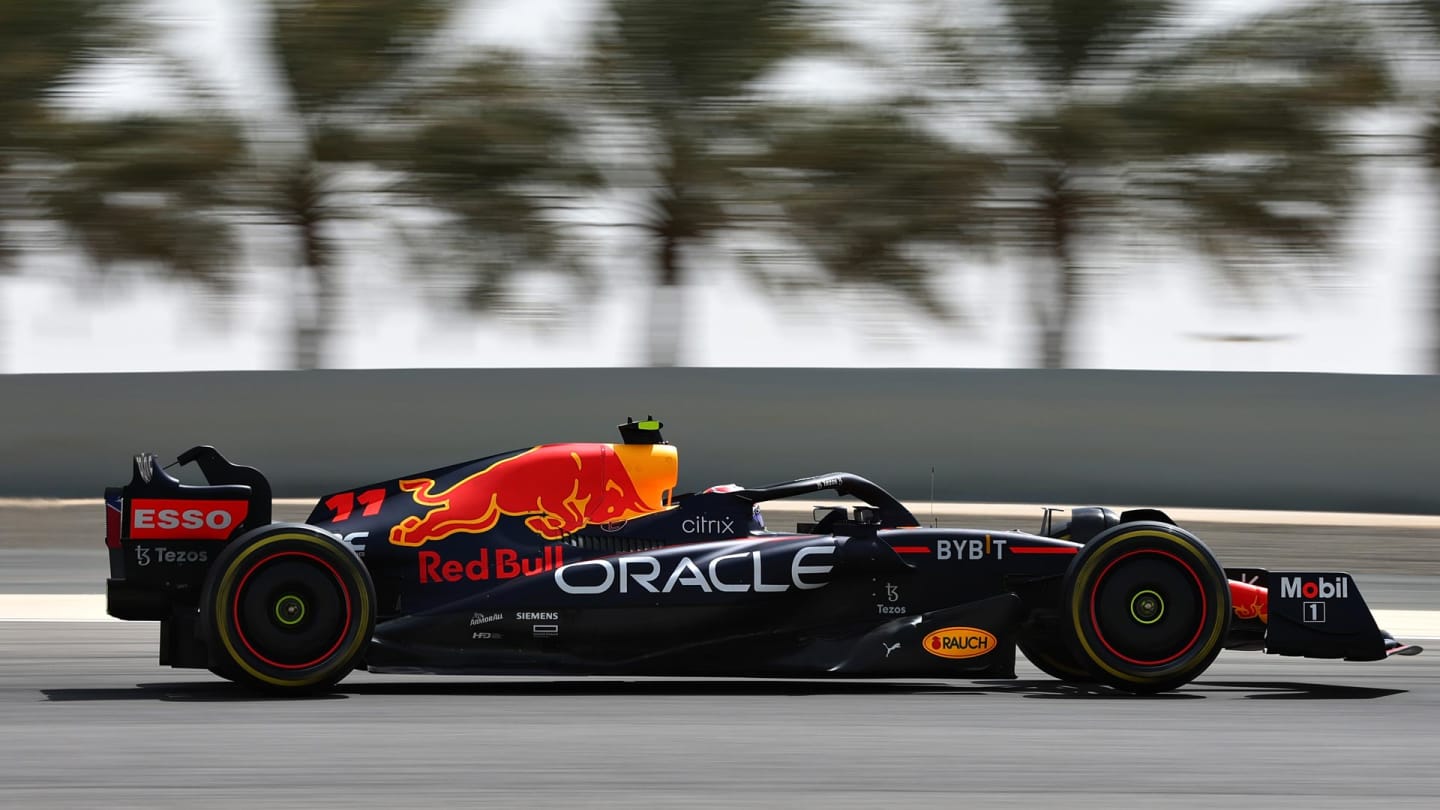
Red Bull ran rake on their RB18 on the final day of Bahrain testing
This was when the car set the fastest times of the test and during those laps it appeared to be relatively immune to porpoising. Rake helped create downforce under the previous technical regulations because it effectively made the flat floor into a big diffuser, with a small gap between the leading edge of floor and the ground expanding into a bigger area behind.
But under the current regulations, with the venturi tunnels in place of the flat floor, the tunnels need to be close to the ground for much of the length of the car and raising the rear will tend to reduce the downforce they create.
READ MORE: The 5 key questions from the 2022 Official Pre-Season Test in Bahrain
But the rake angle could be used as a tuning device to keep the downforce from reaching the stall point which creates the porpoising. This point will vary from track to track and so the rake can be adjusted appropriately simply by adjusting the rear pushrods and/or front pullrods.
There is lap time to be found by running the car low. But it’s a hazardous path to follow, with the onset of porpoising just waiting to ambush the best-laid plans. It’s going to be fascinating watching the teams race to solve the problem.
YOU MIGHT ALSO LIKE
News Verstappen admits Russell contact ‘shouldn’t have happened’ in Spanish GP as Dutch driver nears race ban threshold
Feature 6 Winners and 5 Losers from Spain – Who bossed it in Barcelona?
News ‘I lost out to the better guy’ – Norris ‘confident’ he can improve after being beaten by Piastri in Barcelona
News Santander launch global free education campaign inspired by Formula 1
